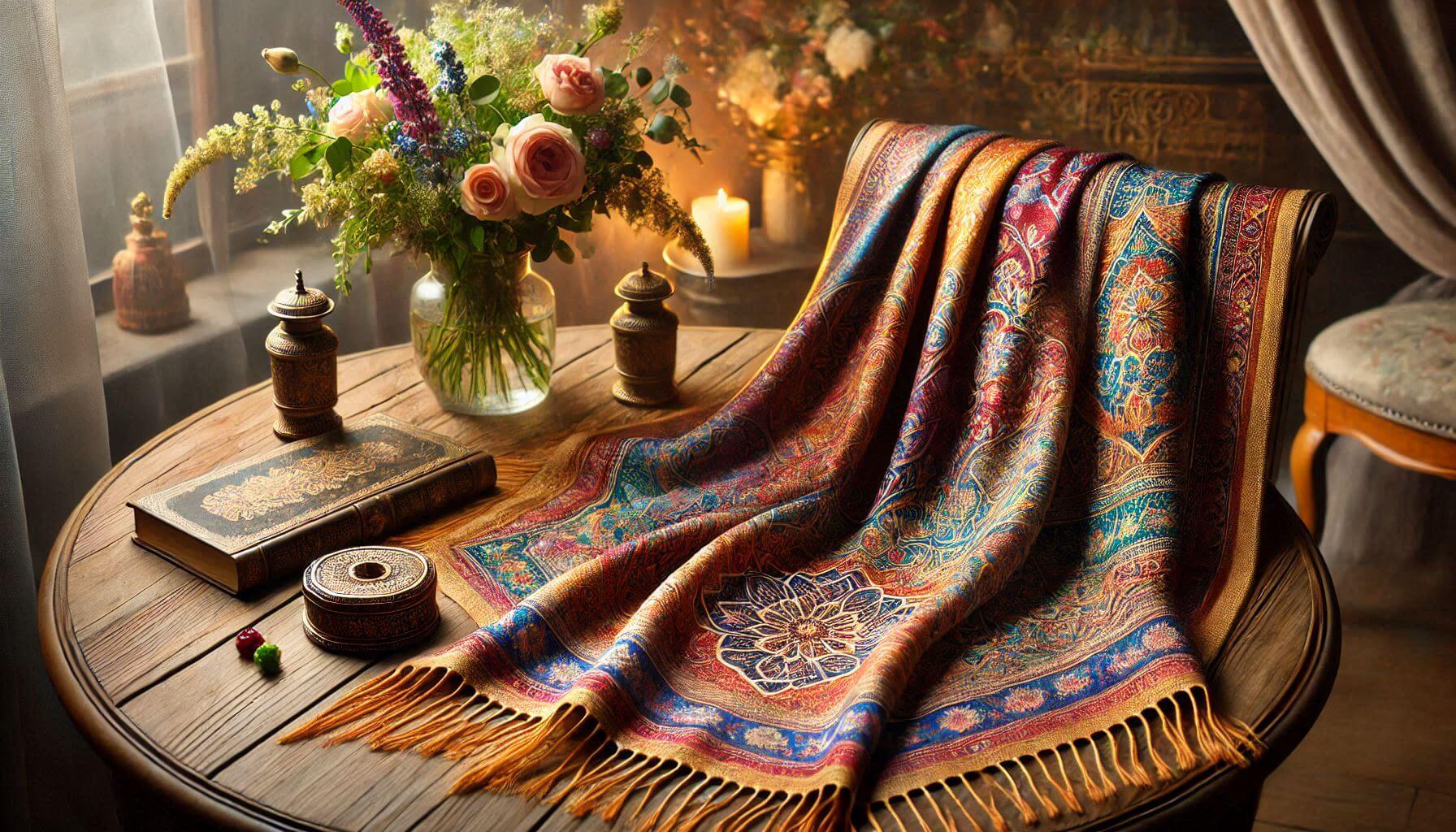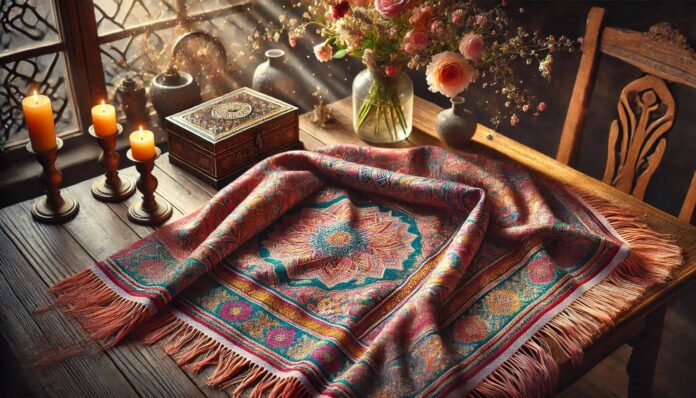What is Pashmina? Pashmina, often referred to as the “soft gold” of textiles, is a luxurious fabric with a rich history and timeless appeal. This exquisite material has captivated people worldwide for centuries, owing to its softness, warmth, and cultural significance. But what exactly is Pashmina, and why is it so highly prized? In this article, we’ll delve deep into the world of Pashmina, exploring its origins, production process, uses, and why it stands out as a symbol of elegance and sophistication.
The Origin of Pashmina
Pashmina finds its roots in the Himalayan regions, particularly in Kashmir, India, and Nepal. The name “Pashmina” is derived from the Persian word “Pashm,” which means wool. This wool comes from the undercoat of the Changthangi goat, a breed native to the high altitudes of the Himalayan mountains. These goats produce wonderful and warm wool to survive the harsh winters, making their fleece perfect for creating luxurious textiles.

For centuries, artisans in Kashmir have been crafting Pashmina shawls, scarves, and other garments. These items were once reserved for royalty and the elite, symbolizing wealth and prestige. Today, while Pashmina remains a luxury item, its availability has expanded, allowing people from all walks of life to enjoy its unparalleled quality.
How is Pashmina Made?
The process of creating Pashmina products is labor-intensive and requires exceptional skill. Here’s a step-by-step look at how this luxurious fabric comes to life:
- Collection of Wool: The Changthangi goats shed their undercoat naturally during spring. This wool is collected by hand without causing any harm to the animals.
- Sorting and Cleaning: The raw wool is meticulously sorted to remove impurities and select the finest fibers. These fibers are then cleaned to eliminate dirt and grease.
- Spinning: Traditionally, Pashmina wool is spun by hand using a spinning wheel known as a “Charkha.” This delicate process ensures that the fibers maintain their softness and strength.
- Weaving: Skilled artisans weave the spun wool into fabric on handlooms. This intricate process can take weeks or even months, depending on the complexity of the design.
- Dyeing and Embroidery: Once the fabric is woven, it may be dyed using natural or synthetic dyes. Some Pashmina products also feature elaborate embroidery, often done by hand.
What Makes Pashmina Special?
Pashmina stands out for several reasons:
- Softness: The fibers of Pashmina wool are incredibly fine, measuring between 12-16 microns in diameter. This fineness gives Pashmina its signature softness, unmatched by other types of wool.
- Warmth: Despite being lightweight, Pashmina provides exceptional insulation, making it ideal for chilly weather.
- Durability: High-quality Pashmina products are long-lasting and can retain their beauty for decades with proper care.
- Artistry: Each Pashmina product is a testament to the skill and dedication of the artisans who create it. The intricate weaving, dyeing, and embroidery make each piece unique.
Common Uses of Pashmina
Pashmina is versatile and can be used in various forms, including:
- Shawls and Scarves: These are the most popular Pashmina items known for their elegance and warmth. Pashmina shawls and scarves are often used as statement pieces for formal occasions or as cozy accessories for everyday wear.
- Blankets and Throws: Pashmina blankets and throws add a touch of luxury to any home, providing warmth and sophistication.
- Garments: Pashmina is also used to make coats, sweaters, and other clothing items, combining style with functionality.
- Gifts: Due to their luxurious nature, Pashmina products make excellent gifts for special occasions.
How to Identify Authentic Pashmina
With the popularity of Pashmina, many counterfeit products have flooded the market. To ensure you’re buying authentic Pashmina, consider the following tips:
- Check the Label: Genuine Pashmina products often come with a label indicating their authenticity. Look for terms like “100% Pashmina” or “Cashmere.”
- Feel the Texture: Authentic Pashmina is incredibly soft and smooth to the touch. If the fabric feels rough or synthetic, it’s likely a fake.
- Burn Test: Real Pashmina burns like natural hair, leaving behind a burnt hair smell and ash. However, this test should only be conducted in a small, inconspicuous area.
- Certification: Many reputable sellers provide certification of authenticity, ensuring that the product is made from genuine Pashmina wool.
Caring for Pashmina
To maintain the beauty and longevity of your Pashmina products, follow these care tips:
- Dry Clean Only: Pashmina is delicate and should be cleaned by a professional dry cleaner.
- Store Properly: Store Pashmina items in a cool, dry place, preferably in a breathable bag to protect them from dust and moths.
- Avoid Excessive Washing: Frequent washing can damage the fibers. Spot cleaning is recommended for minor stains.
- Handle with Care: Avoid pulling or stretching the fabric to prevent damage.
Pashmina in Fashion and Culture
Pashmina has transcended its origins to become a global fashion staple. It is often seen on runways and red carpets, draped elegantly around celebrities and influencers. Designers frequently incorporate Pashmina into their collections, blending traditional craftsmanship with contemporary styles.
Culturally, Pashmina remains a symbol of heritage and craftsmanship in regions like Kashmir. It plays a significant role in traditional ceremonies and is often passed down as a cherished heirloom.
The Economic and Environmental Impact
The production of Pashmina supports local economies in the Himalayan regions. Many families rely on Pashmina weaving and embroidery as their primary source of income. By purchasing authentic Pashmina products, consumers contribute to preserving this age-old craft and supporting sustainable livelihoods.
Environmentally, Pashmina production is relatively eco-friendly. The wool is collected without harming the goats, and traditional methods of spinning and weaving have minimal environmental impact. However, the industry faces challenges such as climate change, which affects the grazing lands of the Changthangi goats.
Why Invest in Pashmina?
Owning a piece of Pashmina is more than just a fashion statement; it’s an investment in quality, tradition, and sustainability. Pashmina products offer:
- Timeless Elegance: Their classic appeal ensures they never go out of style.
- Unmatched Comfort: The softness and warmth of Pashmina are unparalleled.
- Cultural Significance: Each piece carries a story of heritage and craftsmanship.
- Eco-Friendly Luxury: Pashmina is a sustainable choice in a world increasingly leaning towards conscious consumption.
Conclusion
Pashmina is much more than a fabric; it’s a symbol of luxury, artistry, and cultural heritage. From its humble origins in the Himalayan mountains to its place in modern fashion, Pashmina continues to captivate and inspire. By understanding what Pashmina is and appreciating the effort that goes into creating each piece, you can make informed choices and genuinely value this extraordinary material.
Whether you’re looking to enhance your wardrobe, add a touch of sophistication to your home, or gift something unique, Pashmina is an excellent choice. So the next time you ask, “What is Pashmina?” remember that it’s not just a fabric—it’s a legacy.
You may also read:Unlocking the Power of the Delusion Calculator: A Guide to Gaining Clarity



